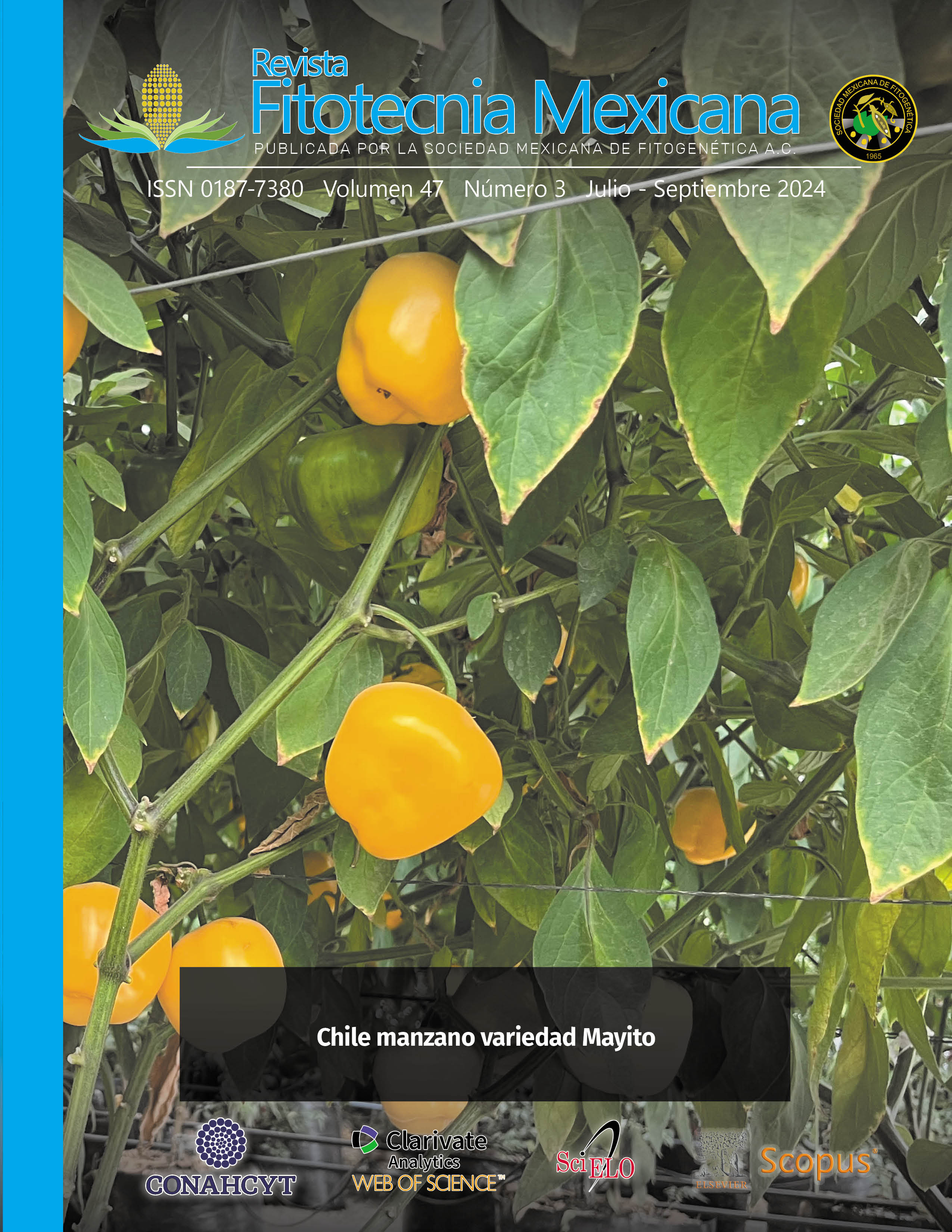INIAP-SUPER FRI, NEW ECUADORIAN POTATO VARIETY WITH HIGH QUALITY AND MODERATELY RESISTANT TO LATE BLIGHT
Main Article Content
Abstract
The potato represents an important component in the diet of the inhabitants of Ecuador, as it constitutes an important source of energy and nutrients. In 2022, at the national level, 251,433 tons were produced, in an area of 17,926 ha, which resulted in an average yield of 14.03 t ha-1 (SIPA, 2023). Production and cultivated area in the country were lower compared to other countries in the region, due to biotic limitations, of which the attack of Phytophthora infestans, which causes late blight, stands out (Devaux et al., 2021). In Ecuador, commercial potato varieties are susceptible to late blight and to control it, weekly fungicide applications must be made throughout the crop cycle (Vásquez-Castillo et al., 2022).
Most of the potato production is destined for the domestic market, around 80% of the national production is consumed fresh and the remaining 20% is used in processing as French fries in the form of flakes or sticks (Ortega and Andrade-Bolaños 2021). The potato intended for processing must come from varieties with very defined attributes in terms of tuber appearance, shape, color, size, eye depth, and dry matter and reducing sugar content (Kirkman, 2007). Currently, these characteristics are not available in most commercial varieties; As a result, during the last year 18,890 tons of frozen pre-fried potatoes were imported from Belgium, the Netherlands and the United States (Ortega and Andrade-Bolaños 2021).
To respond to these limitations, the National Institute of Agricultural Research (INIAP) of Ecuador developed a genetic improvement program in which it identified 20 parents with characteristics of resistance to late blight and quality; With them they made 103 crosses, of which 1,200 progenies resulted.
Subsequently, 500 clones were selected; from this group, and after four cycles, 20 clones were identified for their agronomic and quality characteristics. Finally, these clones were evaluated in a participatory manner with farmers in the six most representative provinces by production in the country and with consumers. As a result, clone 98-38-12 was identified, a product of the crossing between genotypes 95-26-4 and 96-1-5, which was released as the INIAP-Super Fri variety.
According to the varietal descriptors of the International Union for the Protection of New Varieties of Plants (UPOV, 2022), INIAP-Super Fri is a variety with semi-erect growth, pigmented stems with little green coloration, dissected leaves with four pairs of lateral leaflets , a pair of inter-leaflets between lateral leaflets, absence of inter-leaflets on the petiole, presents profuse flowering, predominant lilac color with pale-light intensity, the secondary color is white with a star-shaped distribution. The corolla has a rotated shape and the calyx is green pigmented (Figure 1A). The tuber has an elongated oblong shape, red skin, yellow pulp and superficial eyes (Figure 1B).
Tuberization begins 55 days after sowing (dash), senescence occurs at 130 das and the harvest can be carried out from 145 das at an altitude of 2900 meters above sea level. Its average yield is 36 t ha-1. Regarding the analysis of the tuber contents, the average dry matter was 22%, the value of reducing sugars was 0.18% on a dry basis and its iron and zinc values were 25 and 12 ppm respectively. The polyphenol content was 147 mg 100 g-1, the total carotenoid content was 275.1 µg 100 g-1, the vitamin C content was 35.07 mg 100 mg-1, a value considered high compared to other improved varieties (Samaniego et al. al., 2020).
According to sensory tests for consumption in the form of fried sticks, soup and boiled potatoes, INIAP-Super Fri obtained the highest rating for the three forms of preparation. In the frying quality evaluation, it stood out with percentages for sticks of 90% and for fried flakes of 80%. With this information, it was concluded that the INIAP-Super Fri variety can be used both for fresh consumption and for processing in the form of fried potatoes and flakes.
In addition, INIAP-Super Fri has moderate resistance to
late blight. The results of three evaluation cycles,
established that the average area under the disease progression curve (ABCPE) value was 1260, which represents a value of 5 according to the susceptibility scale (ES) (Yuen and Forbes 2009). These values were better when compared with the INIAP-Fripapa control, which presented an average ABCPE value of 1650 and a value of 7 according to the ES.
During three cycles in nine locations, complementary tests of performance, adaptation and stability of the selected clones were carried out. The analysis of variance for performance detected significant differences (P ≤ 0.01) for the factors genotypes, environments and genotype × environment interaction. The variation in performance was due to the effect of the genotype × environment interaction and the environmental factor, which contributed 33.49 and 32.01%, respectively, to the total variation. The analysis of adaptability using the linear regression model (Finlay and Wilkinson, 1963) established that INIAP-Super Fri had less adaptation compared to the control INIAP-Fripapa, the regression slope value for INIAP-Super Fri was 0.97. and for INIAPFripapa of 1.03; however, the performance of INIAPSuper Fri was superior in all environments. The Ministry of Agriculture and Livestock of Ecuador issued the definitive cultivar registration certificate VII-25, with the name INIAP-Super Fri and it was commercially released in July 2022. The seed of the INIAP-Super Fri variety is available for its sale at the Santa Catalina Experimental Station of the INIAP, in Ecuador.
ACKNOWLEDGMENTS
To the Spanish Agency for International Development Cooperation (AECID) within the Delegation Agreement DCI/ 2017/386-673 signed with the European Union (EU) within the framework of the program “Support for the development of human talent, innovation and transfer of technology in Ecuador”.

